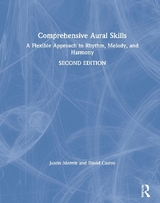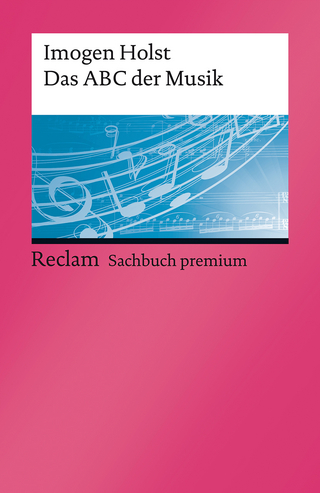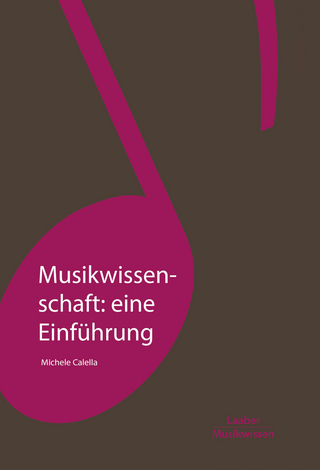
Comprehensive Aural Skills
Routledge (Verlag)
978-1-138-90070-7 (ISBN)
- Titel erscheint in neuer Auflage
- Artikel merken
Features
A complete suite of aural skills material: Comprehensive Aural Skills is a combined sight singing and ear training textbook, audio, and companion website package.
Fully modular, customizable organization: Instructors can choose freely from the set of exercises in the book and supplemental material on the companion website to appropriately tailor the curriculum based on their students’ needs.
Engaging and idiomatic musical examples: Examples are selected and composed specifically for the didactic context of an aural skills classroom.
Dictation exercises for practice and assignment: Practice exercises include an answer key so students can work independently and receive immediate feedback, while homework assignments are given without a key.
Audio examples for dictation: The website hosts live recordings of acoustic instruments performed by professional musicians for each dictation exercise and homework assignment.
Supplemental Materials for Instructors: A wealth of material for class use and assignment can be found on the companion website.
Teachers Guide: The guide includes answers for every homework assignment, brief commentary on each module’s content, tips for integrating written theory, and strategies on how to effectively teach new concepts and skills.
The companion website for Comprehensive Aural Skills includes a wealth of additional examples in all areas of aural skills and at every level of difficulty represented in the text. Students have access to additional dictation examples with recordings and answer keys, allowing them to directly reinforce their classroom experience and practice dictation on their own time.
Table of Contents
Preface
Rhythm
Module 1 : Simple Meters, Duple and Quadruple
Module 2 : Rests and Ties
Module 3 : Simple Meters, Triple
Module 4 : Syncopation in Simple Meters
Module 5 : Compound Meters, Duple and Quadruple
Module 6 : Compound Meters, Triple
Module 7 : Syncopation in Compound Meters
Module 8 : Triplets, Duplets, and Hemiola
Module 9 : Compound Meters, Advanced Beat Patterns
Module 10 : Asymmetrical and Mixed Meters
Melody
Module 1 : Steps Within the Major Scale
Module 2 : Steps Within the Minor Scale
Module 3 : Skips Within the Tonic Triad (Major and Minor)
Module 4 : Skips Within the Dominant (Seventh) and vii°
Module 5 : Further Diatonic Skips
Module 6 : Stepwise Chromatic Tones
Module 7 : Motion to the Dominant
Module 8 : Leaps To and From Chromatic Tones
Module 9 : Modulation to Closely Related Keys
Module 10 : Advanced Chromaticism
Module 11 : Modulation to Distantly Related Keys
Module 12 : Pentatonic and Diatonic Modes
Module 13 : Other Modes
Module 14 : Sets and 12-Tone Rows
Harmony
Module 1 : I(i) and V (^1 and ^5 in the bass)
Module 2 : IV(iv), ii6(°6), and ii (^4 and ^2 in the bass)
Module 3 : I(i)6, vii°6, and V6 (^3, ^2, and ^7 in the bass)
Module 4 : V7, vii°7, and their inversions (^5, ^7, ^2, and ^4 in the bass)
Module 5 : The Passing 6/4, Cadential 6/4, and Pedal 6/4 (^1, ^2 and ^5 in the bass)
Module 6 : IV(iv)6, vi(VI), and iii(III) (^6, and ^3 in the bass)
Module 7 : Predominant Seventh Chords - ii(ø)7, ii(ø)65, and IV(iv)7
Module 8 : Applied Dominants 1 - V7/V, vii°7/V, and V7/III
Module 9 : Applied Dominants 2 - V7/IV(iv) and vii°7/iv
Module 10 : Applied Dominants 3 - V7/ii, vii°7/ii, V7/vi(VI), and vii°7/vi
Module 11 : Modulation to Closely Related Keys
Module 12 : Modal mixture
Module 13 : The Neapolitan (bII)
Module 14 : Augmented 6th Chords
Module 15 : Modulations Using vii°7 and The ct°7
Appendices
Glossary of Terms
Solmization Systems
| Erscheinungsdatum | 15.03.2016 |
|---|---|
| Zusatzinfo | 1800 Line drawings, black and white |
| Verlagsort | London |
| Sprache | englisch |
| Maße | 203 x 254 mm |
| Gewicht | 998 g |
| Themenwelt | Kunst / Musik / Theater ► Musik ► Musiktheorie / Musiklehre |
| ISBN-10 | 1-138-90070-2 / 1138900702 |
| ISBN-13 | 978-1-138-90070-7 / 9781138900707 |
| Zustand | Neuware |
| Haben Sie eine Frage zum Produkt? |
aus dem Bereich



